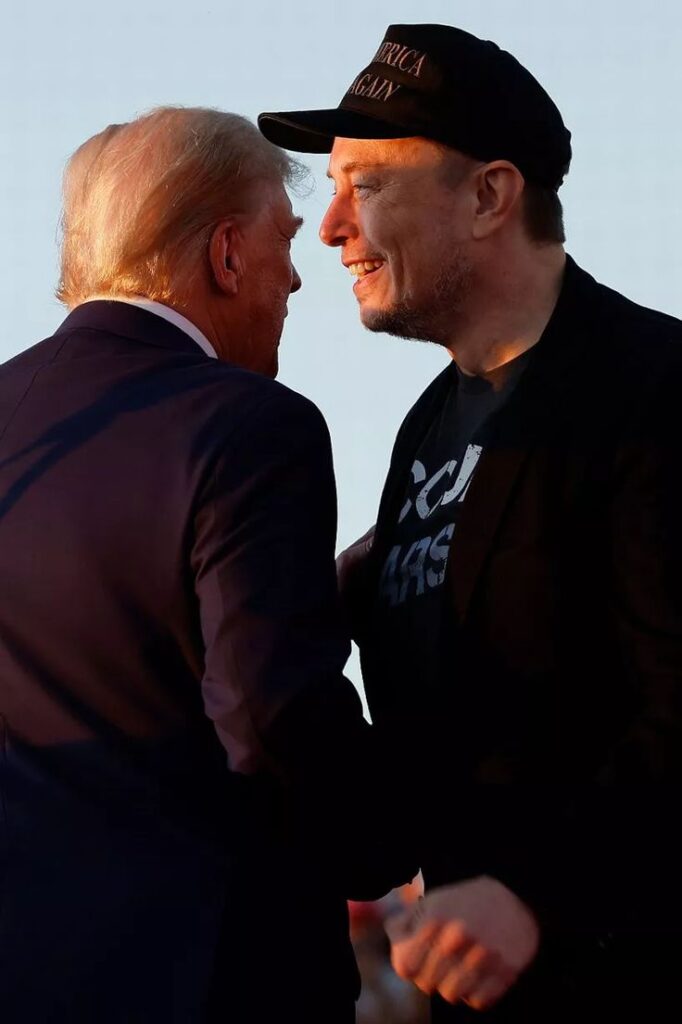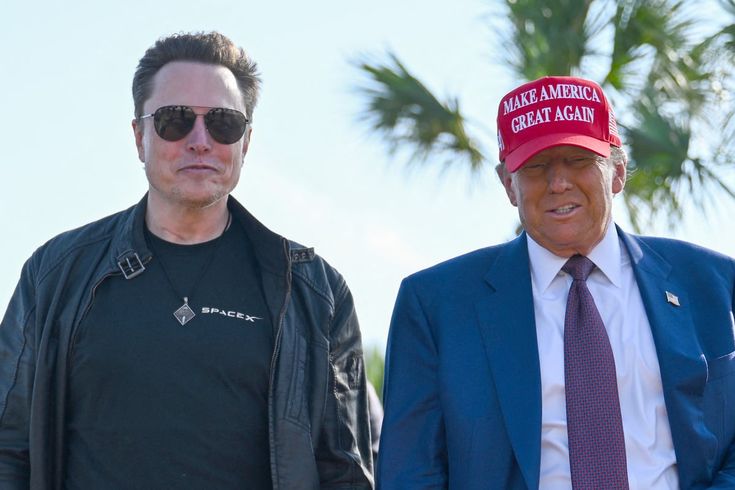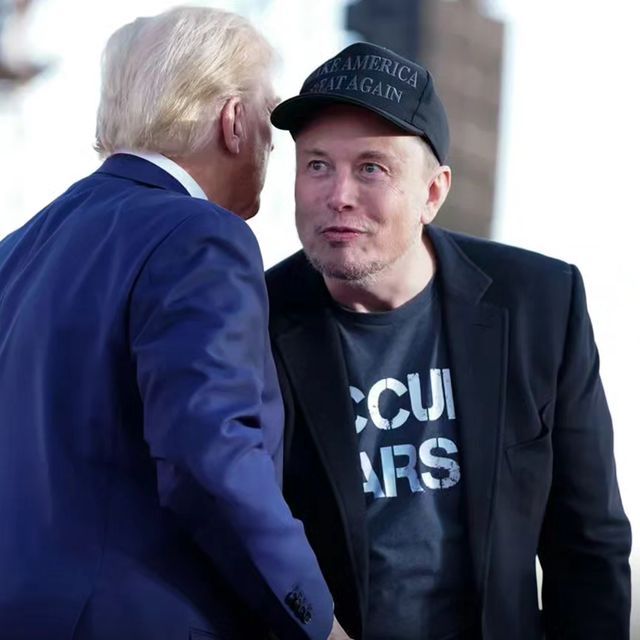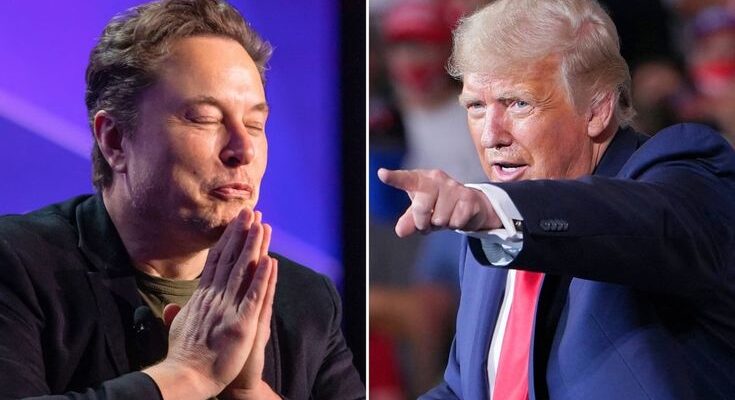In a historic and highly anticipated event, President Donald Trump and entrepreneur Elon Musk held a joint press conference in the Oval Office, drawing the attention of both national and international media. The meeting, filled with bold statements, visionary proposals, and political undertones, marked the convergence of two of the most polarizing and influential figures of the modern era. While the two men come from very different worlds—one from politics and real estate, the other from space and technology—they share a flair for controversy, a large following, and a belief in the power of American exceptionalism.

The Setting
The press conference took place on a bright afternoon in Washington, D.C., with the Oval Office arranged to accommodate reporters, advisors, and camera crews. The American flag stood prominently behind the Resolute Desk, where President Trump and Musk were seated side by side. A buzz filled the air, as journalists speculated about the purpose of their unusual joint appearance. Both men entered with confident strides, shaking hands for the cameras before taking their seats.
The Opening Remarks
President Trump began the conference with his signature bravado.
“Ladies and gentlemen, today is a great day for America. I’m here with a great friend of mine, a brilliant guy, Elon Musk. Everybody knows Elon—he’s done incredible things with Tesla, with SpaceX, with Starlink. I’ve always said America needs to dream big again, and nobody dreams bigger than Elon. We’re announcing something today that’s going to change the future.”
Elon Musk followed with his own brief statement, characteristically understated.
“Thanks, Mr. President. It’s a pleasure to be here. I believe innovation and freedom go hand-in-hand. Today’s announcement is about accelerating progress and creating a future that benefits everyone.”

Key Announcements
The main subject of the press conference was a proposed public-private partnership between the U.S. government and Musk’s companies, focused on three major areas: advanced manufacturing, space exploration, and artificial intelligence.
1. American Manufacturing 2.0
President Trump and Musk revealed a plan to bring high-tech manufacturing jobs back to the United States. Dubbed “American Manufacturing 2.0,” the initiative would provide tax incentives for companies investing in robotics and clean energy manufacturing on U.S. soil.
“This is not your grandfather’s factory,” Trump declared. “We’re talking about solar-powered facilities, 3D printing, AI-driven production lines. Elon’s already doing it, and now we’re bringing it to every state.”
Musk explained that Tesla and SpaceX would open new manufacturing hubs in regions that have been economically depressed. He emphasized that automation wouldn’t replace humans entirely but would require retraining workers in advanced skills.
2. The Mars Pact
In one of the most ambitious parts of the press conference, Trump and Musk announced what they called the “Mars Pact,” a joint effort to land humans on Mars within a decade.
“This is not science fiction,” Trump said. “We are going to be the first nation on Mars. And we’re going to do it under budget, ahead of schedule, and with American rockets built by American workers.”
Musk added that SpaceX’s Starship program would receive logistical support from NASA and streamlined regulatory pathways from the federal government. “Colonizing Mars is not just about space—it’s about survival, exploration, and inspiration.”

3. The National AI and Cybersecurity Alliance
Acknowledging growing global competition in artificial intelligence, Musk and Trump announced a new National AI and Cybersecurity Alliance. This would involve Tesla’s Dojo supercomputer and data from various government agencies to improve infrastructure security, automate public systems, and counter cyber threats.
Musk warned of AI’s potential risks if not developed responsibly, while Trump insisted that the U.S. must lead the world in AI development. “We don’t want China or anyone else getting ahead in this space,” he said. “We want innovation with American values.”
Media Reaction and Q&A
During the question-and-answer session, reporters pressed both men on a range of topics. One asked whether the partnership blurred the line between government and business.
“Elon’s a private citizen,” Trump replied. “But he’s doing things no one else is doing. And we’re smart enough to work with winners.”
When asked about Musk’s controversial views on free speech and his handling of X (formerly Twitter), the tech mogul responded, “Free speech is the cornerstone of democracy. Whether people like it or not, it’s important that we don’t silence opposing viewpoints.”
Another journalist asked if Musk would ever consider running for office. Musk smiled and said, “I think I’m more useful outside the political system right now.”

Public and Political Response
The press conference immediately sparked strong reactions across the political spectrum. Supporters of both Trump and Musk hailed the event as a bold step toward restoring American greatness and technological leadership. Social media lit up with hashtags like #TrumpMusk2025, #MarsPact, and #MadeInAmerica.
Critics, however, were less enthusiastic. Some accused the administration of favoritism, while others raised concerns about the ethical implications of combining state power with corporate influence. Lawmakers from both parties called for oversight hearings to examine the specifics of the partnership.
Progressive commentators warned that such a collaboration could widen inequality or concentrate too much influence in the hands of one billionaire. Nevertheless, the buzz created by the conference ensured that the proposals would remain at the center of public debate for weeks to come.
Historical Context
This wasn’t the first time Musk and Trump had collaborated or clashed. During Trump’s first term, Musk briefly served on the president’s business advisory councils before stepping down over the U.S. withdrawal from the Paris climate accord. Since then, both have evolved politically, often making headlines for their unfiltered statements, unpredictable decisions, and loyal base of supporters.
Their joint appearance marked a significant turning point, especially as both figures remain highly relevant in shaping the narrative of America’s future—Trump in politics, and Musk in technology.

A Meeting of Mavericks
What made the press conference most notable was the symbolism. Trump, known for his “America First” agenda and populist appeal, appeared alongside Musk, the visionary billionaire championing technological revolution. Despite their differences, the two found common ground in ambition, disruption, and a belief in American exceptionalism.
Their joint announcement captured the imagination of millions—some inspired, others wary. Whether the initiatives discussed will materialize remains to be seen, but the event itself demonstrated the power of personality, media, and vision in shaping political and technological discourse.
Conclusion
The Oval Office press conference between President Donald Trump and Elon Musk will be remembered not just for its announcements, but for the broader message it sent: a call for bold innovation, strategic collaboration, and national renewal. Whether history judges it as a genuine turning point or a political spectacle, the moment highlighted how two larger-than-life figures could shape—and shake—the foundations of modern America. As the cameras clicked and the headlines rolled in, one thing was clear: the world was watching, and the future had just taken another unpredictable turn.



